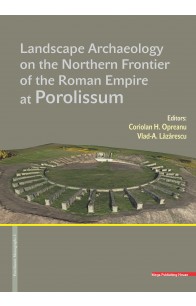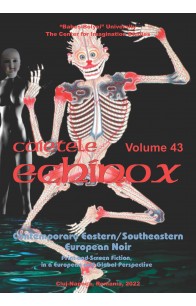Rezultate căutare pentru 'Ioan Oprea'
„The frontiers of the Roman Empire, over 5000 km long, stretch from the Atlantic coast of Scotland, along the Rhine and the Danube, also enclose the Banat region and Transylvania, then going down along the Oriental Carpathians to the Black Sea; from the southern coast of the Black Sea they continue towards the Near East until the Red Sea; then, in North Africa, they line the edge of the Sahara desert until the Atlantic coast of Morocco. Over this entire area, visible traces of fortifications, roads and settlements are still preserved, but numerous monuments still lay hidden underneath the earth. Despite the fact that the Roman frontiers crossed regions with different relief and climate, they constitute a whole in that they were designed to protect Roman territories. The research of these monuments and the preservation policy regarding them was and is unequal in the various presentday states on whose territory traces of the Roman frontier are to be found. Consequently, in the ‘80s of the 20th century, the idea of globally protecting the Roman frontiers, viewed as a unitary monument, was met. In 1987, Hadrian’s Wall in United Kingdom was declared a UNESCO monument. It was followed in 2005 by the German-Raetian sector, on which occasion the UNESCO committee decided to set up the ‘Frontiers of the Roman Empire’ site. (...)
This project through its complexity generated an interdisciplinary approach of the proposed subject stimulating such future attempts in the archaeological research field. By using the latest technical methods of non-destructive investigation the project did not damage the stratigraphy of the archaeological site obtaining instead a high amount of data otherwise time consuming judging from the archaeological excavations perspective contributing also to the preservation of the cultural heritage.” - Introduction
Preț Normal: 150,00 LEI
Special Price 130,00 LEI
Sommaire
Caius Dobrescu, Noir, Eastern Europe, and the Global Imaginary
East European Noir – General and Particular
Caius Dobrescu, Exploring/Inventing East-European Noir. An Attempt to Modelling Historical Transformation
Doru Pop, The Socialist Boy Detectives and The Cold Wars of Childhood
Katre Talviste, The Curious Case of Juhan Paju and a Fortunate Choice of Pop Lit over Poetry
Primož Mlačnik, From Minor Literature to Neoliberal Noir: The Detective Novels of Sergej Verč
Marcela Poučová, « Accepter et pardonner, c’est se réconcilier avec soi-même ». l’Histoire tchèque du XXe siècle vue par le roman policier
Radu Toderici, Late Modernist Noirs: Béla Tarr’s Damnation/ Kárhozat and György Fehér’s Passion/ Szenvedély
Gender & Noir
Amalia Mărășescu, Female Detectives in Romanian Literature: Vitoria Lipan and Minerva Tutovan
Roxana Eichel, Intersecting Inequalities in Romanian Crime Series Shadows (HBO). Expressions of Identity between Authenticity, Stereotypes and “Eastploitation”
Andrada Fătu-Tutoveanu, Death Becomes Her. Implicit Religion, Relics, Myth-Making and the Witch Complex in Visual Representations of Women in Film Noir. A Case Study
East Seen From the West
Paul Bleton, Lu a l’Ouest, le crime de l’Est a du lest
Ioana Andrea Diaconu, Creating and Destroying Prejudices. Romanian Characters in German Television Thrillers Beginning with the Millennium
Sándor Kálai, Europa Blues (L’Europe de l’Est des romans policiers scandinaves)
Noir sans frontiers: Beyond Genre and Geography
Marius-Mircea Crișan & Carol Senf, The Mysteries of the Post-Communist Vampire: Detective Features in the Novel Nepotul lui Dracula by Alexandru Mușina
Alex Văsieș, Narrative Devices in Motion: From Genre Fiction to Mainstream Fiction in Florin Chirculescu’s Prose
Maria Barbu, Virtual Dystopias: Westworld and Technology’s Potential to Save or Enslave the World
Carmen Borbély, Noir Affect in Lauren Beukes’s Zoo City
Ruxandra Cesereanu, The Savage Detectivism of Roberto Bolaño’s Fiction
Călina Părău, Residues and Presents in Contemporary Shrinking Temporalities
Les imaginaires du féminin/masculin dans la littérature
Najate Nerci, Introduction
Corin Braga, The New Amazons: Second-Wave Feminist Dystopias Assunção Pesché Luísa, Les héroïnes (fatales) brésiliennes : archétypes et métamorphoses
Gérard Peylet, Le masculin et le féminin dans le roman sandien : Vers un dépassement de la dualité
Crina-Magdalena Zărnescu, Sous le masque du masculin ? Approche poétique du roman Mémoires d’Hadrien de Marguerite Yourcenar
Souad Atoui-Labidi, Réinvention et détournement du féminin ou Schéhérazade au masculin dans ZABOR ou les psaumes de Kamel Daoud
Eylül-Sabo-Andrada Yunusoglu, “The Harem Within”: The Complexity of Female Identity in Elif Shafak’s Black Milk
Fatema-Ezzahra Taznout, Yasmine Chami, une écriture de l’intranquilité
Hichem Ismaïl, L’antagonisme du féminin et du masculin dans Salammbô de Flaubert
Laura T. Ilea, La littérature féminine en infrarouge. Au-delà du nihilisme







